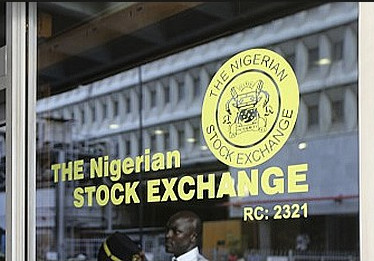FOREIGN investors have injected $10.6 billion into the economy through the Investors and Exporters (I&E) window since the beginning of the year, even as they intensified demand for Nigerian Corporate Eurobonds listed on the London Stock Exchange (LSE).
Financial Vanguard analysis of dollars traded in the Investors and Exporters (I&E) window from January 2 till last week, showed that foreign investors have supplied $10.6 billion, implying sustained investors confidence in the window, which was introduced April 21 last year.
The $10.6 billion traded year-to-date (YTD) represents 38.5 percent of the $26 billion traded in the window last year.
The YTD volume also implies monthly average of $5.3 billion and weekly average of $1.33 billion. Should this trend persist till the end of the year, this will translate to $63 billion injection from foreign investors, up from $26 billion recorded last year.
Last week, dollars traded in the window rose for the second consecutive week by 44 percent to $1.33 billion, from $929.7 million recorded in the previous week. As a result, the naira appreciated by 61 kobo as the indicative exchange rate for the window, dropped to N360.9 per dollar from N360.7 per dollar the previous week.
The naira also stabilised at N362 per dollar at the parallel market throughout last week. On its part the Central Bank of Nigeria (CBN) sustained its weekly intervention in the foreign exchange market last week, as it injected $210 million through the interbank foreign exchange market.
Foreign investors intensify demand for Nigerian Corporate Eurobonds Last week, foreign investors intensified demand for Nigerian Corporate Eurobonds listed on the London Stock Exchange, prompting decline in yields for six out of those listed on the Exchange.
Sustained buying interest Diamond Bank 2019 Eurobond led the rally as its yield fell by 34 basis points (bpts) to 9.1 percent, while Zenith Bank 2019 Eurobond received least interest hence its yield rose by 10bpts to 4.1 percent.
The best performing bonds, in terms of YTD price change, are FBN 2021 and DIAMOND 2019 with YTD return of 3.6 percent and 3.1 percent respectively. On the contrary, investors interest for FGN Eurobond cooled last week, as five out of the six FGN Bonds listed experienced sell pressure, prompting their yields to rise week-on-week (W-o-W). However, the JUN 2018 instrument enjoyed sustained buying interest prompting 10 bpts decline in its yield (W-o-W).
Cost of funds to rise amidst sustained liquidity mop up The three weeks downward trend in cost of funds in the interbank money market will be reversed this week as the CBN sustains the aggressive liquidity mop-up conducted last week. The market enjoyed upsurge in liquidity last week prompted by N1 trillion inflow comprising N369.35 billion from matured treasury bills (TBs) and N635.5 billion released by the Federation Accounts Allocation Committee (FAAC) to the three tier of government as statutory allocation for January.
This prompted average cost of funds to drop to 5.3 percent on Wednesday, from 11.2 percent the previous week. The CBN however rolled out secondary market (Open Market Operations, OMO) TBs, worth N656.4 billion, to mop up the liquidity inflow, which caused cost of funds to rise on Friday, albeit lower than the previous week.
Data from Financial Market Dealers Quote (FMDQ) showed that interest rate on Collateralised lending (Open Buy Back, OBB) closed the week at 9.8 percent, down by 170bpts from 11.5 percent the previous week. Also, interest rate on Overnight lending closed the week at 10 percent, down by 240 bpts from 12.4 percent the previous week.
This week the market will enjoy lower inflow of N130 billion from maturing TBs. However, with market liquidity still high at over N300 billion at the close of business on Friday, the CBN is expected to conduct more OMO TBs for liquidity mop-up purpose.
Hence cost of funds is expected to rise this week. According to analysts at Lagos based Afrinvest Plc, “We expect the CBN to conduct OMO auctions to mop-up liquidity in order to align with its goal of foreign exchange rate stability”.




